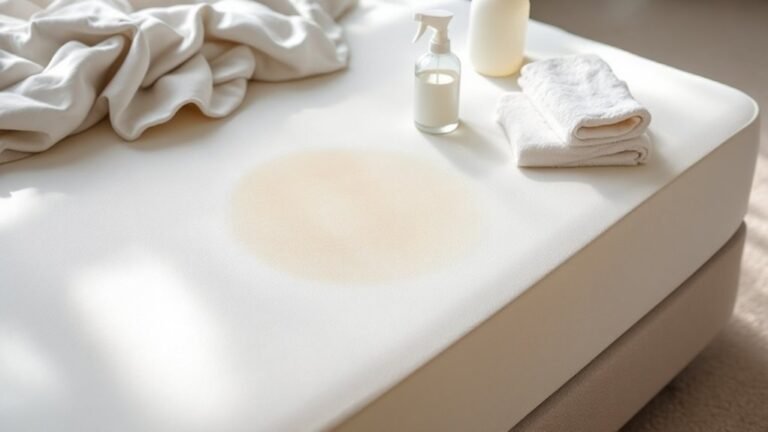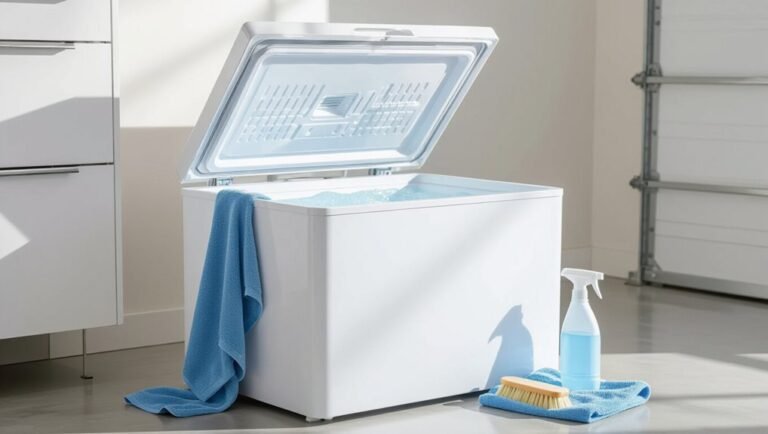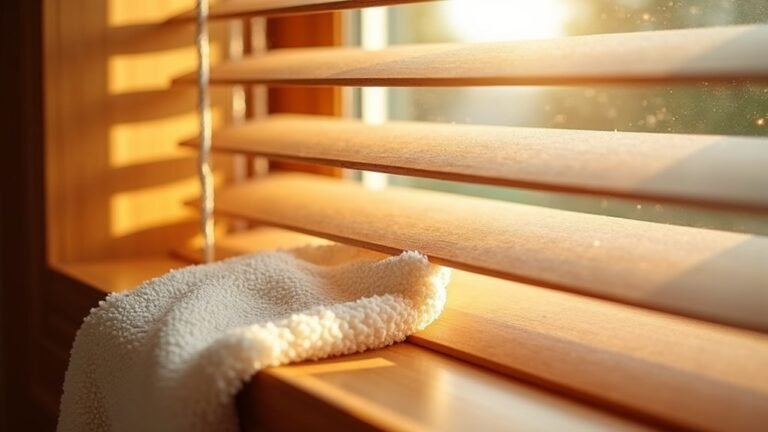We’ve all been there—a glass of milk spills and makes a white mess on our carpet. While it might look like a simple cleanup job, milk stains can become a real headache if you don’t act fast. When milk gets left in carpet fibers, it can go bad and create that awful sour smell that won’t go away.
Some of the links in this article may be affiliate links. If you make a purchase through these links, we may earn a small commission at no extra cost to you. Thank you.
According to cleaning expert Leslie Reichert, “The biggest mistake people make is not getting all the milk out of the carpet fibers. Any milk left behind will spoil and create an odor that’s very difficult to remove.”
Let’s walk through the best way to clean up a milk spill before it becomes a lasting reminder of your spilled breakfast. This method is straightforward and uses items you probably already have at home. The key is to act quickly and be thorough in your cleaning, making sure you get all the milk out of the carpet.
Milk Messes: Act Fast!
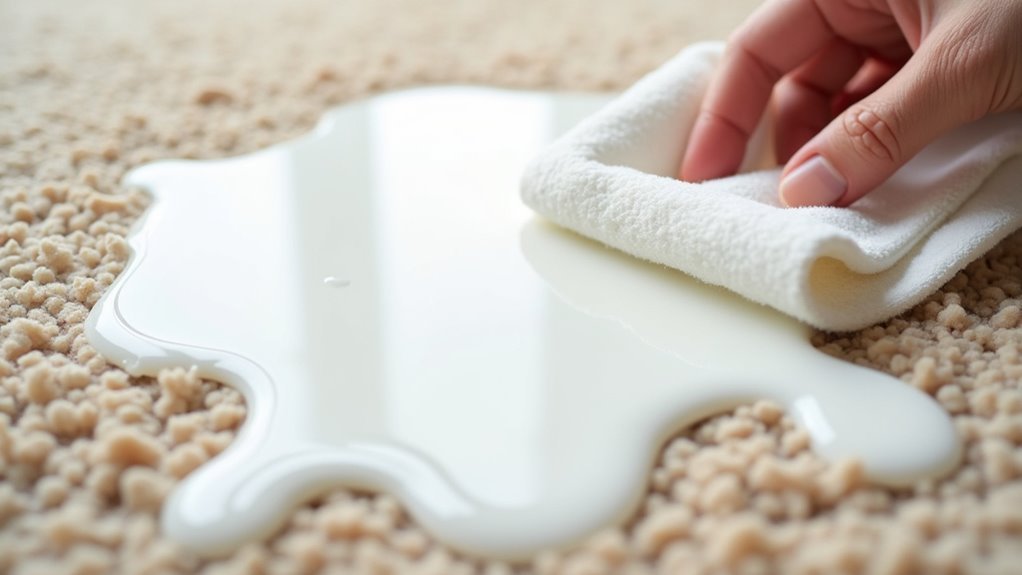
Spilled milk on your carpet isn’t just a minor inconvenience—it’s a race against time.
When milk sits untreated, bacteria start breaking down proteins and fats, creating that awful sour smell we all dread.
Don’t wait! Grab paper towels and blot immediately.
For bigger spills, we recommend placing a dry towel with some weight on top to extract more liquid.
Trust us, those first few minutes matter most. Proper drying after cleaning is essential to prevent any lingering odors or stains.
##
We’ve all been there – one moment everything’s fine, then suddenly there’s milk soaking into your carpet.
Let’s talk about what works (and what definitely doesn’t) when tackling these pesky spills before they become permanent problems. A quick cleanup often involves regular cleaning and deodorizing to prevent lasting damage to your carpet. I think the right approach can make all the difference between a quick cleanup and a lasting carpet stain.
Things to Do When Cleaning Milk on carpet
When dealing with spilled milk on carpet, immediate action is vital to prevent the liquid from soaking deep into the fibers and creating unpleasant odors as it spoils.
Milk contains proteins and fats that can become stubborn stains and produce sour smells if not properly addressed.
Since carpets are absorbent and provide numerous hiding places for liquid between the fibers, a systematic approach using the right cleaning solutions and techniques is essential for completely eliminating both the stain and odor.
- Blot immediately with paper towels or clean cloth, pressing firmly to absorb as much liquid milk as possible before it penetrates deeper into carpet fibers.
- Create a cleaning solution by mixing 2 cups warm water with 1 tablespoon dish soap, then apply it to the stain by blotting gently with a clean cloth.
- Apply an enzyme-based cleaner for persistent odors, allowing it to sit for 10-15 minutes to break down milk proteins and fats before blotting dry.
- Make a vinegar solution with 1 cup white vinegar and 2 cups warm water, apply to the stained area, and let it sit for 5-10 minutes to neutralize odors.
- Thoroughly dry the area using a fan or dehumidifier, and place a weighted dry towel over the spot to draw out remaining moisture and prevent mold development.
Things to Avoid When Cleaning Milk on carpet
Cleaning up milk spills from carpeting requires careful attention to make sure you don’t inadvertently make the situation worse.
What seems like a straightforward cleanup job can quickly become problematic if improper techniques are used, potentially leading to permanent staining, lingering odors, and damaged carpet fibers.
The correct approach involves understanding not just what to do, but equally importantly, what actions to avoid.
- Hot water: Avoid using hot water on milk spills as it causes the proteins in milk to coagulate and bond more firmly to carpet fibers, making the stain substantially more difficult to remove.
- Vigorous scrubbing: Don’t rub or scrub the spill aggressively as this pushes milk deeper into the carpet’s backing and damages fibers, potentially creating a larger, more persistent stain.
- Ammonia-based cleaners on natural fibers: Never use ammonia products on wool or natural fiber carpets as they can permanently damage and discolor these materials.
- Untested cleaning products: Avoid applying any cleaning solution without first testing it on an inconspicuous area of carpet to make sure it won’t cause discoloration or additional damage.
- Delayed cleanup: Don’t postpone addressing milk spills, as bacteria begin breaking down milk proteins within hours, intensifying odors and allowing the liquid to penetrate deeper into carpet layers.
Steps
Spilled milk on carpet can quickly become a smelly disaster if not addressed promptly.
The combination of proteins and fats in milk makes it particularly prone to developing unpleasant odors as it spoils, while also potentially leaving behind stubborn stains.
Fortunately, with the right approach and household supplies, you can effectively remove both fresh and dried milk spills from your carpet, eliminating both stains and odors completely.
Step 1: Immediately blot up as much milk as possible using paper towels or a clean cloth, pressing down firmly without rubbing to prevent the liquid from penetrating deeper into carpet fibers.
Step 2: Create a cleaning solution by mixing two cups of warm water with one tablespoon of dish soap in a bowl.
Step 3: Dip a clean cloth or sponge into the soap solution and gently blot the stained area, working from the outside toward the center to prevent spreading.
Step 4: For stubborn or older stains, apply an enzyme-based cleaner directly to the affected area and allow it to sit for 10-15 minutes to break down the milk proteins.
Step 5: Prepare a deodorizing solution by mixing one cup of white vinegar with two cups of warm water, then apply it to the stain area and let it sit for 5-10 minutes.
Step 6: Rinse the area by blotting with a clean cloth dampened with plain water to remove all cleaning solutions.
Step 7: Thoroughly dry the area using clean, dry towels, pressing firmly to absorb as much moisture as possible.
Step 8: Set up a fan or dehumidifier to circulate air around the cleaned area, ensuring it dries completely within a few hours to prevent mold growth.
Final Thoughts
Tackling milk spills on your carpet doesn’t need to end in disaster or lingering odors.
Remember that time is truly of the essence – we’ve seen how milk can quickly become a stubborn problem if left untreated.
For particularly tough situations, don’t hesitate to call professionals like EasyClean.
We think their experience makes them worth considering when home remedies just aren’t cutting it.
##
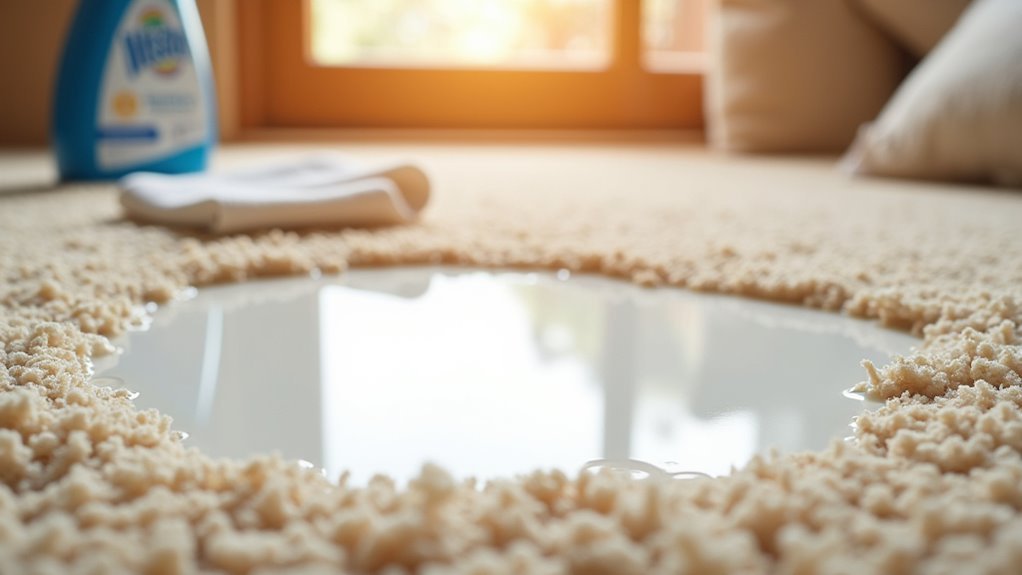
Cleaning milk spills from your carpet doesn’t have to be a stressful experience when you act quickly and use the right techniques.
Remember that the key to successful milk stain removal is addressing the spill promptly—blot immediately, clean with a gentle soap solution, use enzyme cleaners for stubborn stains, and tackle odors with baking soda or vinegar.
These simple, household-friendly methods can save you from permanent carpet damage and unpleasant smells. Even dried milk stains can be effectively treated with a little patience and the proper approach. Additionally, following appropriate cleaning codes can also guide you in using safe and effective cleaning methods for your carpet.
Don’t hesitate to try these proven methods the next time you face a milk spill on your carpet.
However, if you’ve given it your best effort and still notice lingering stains or odors, professional carpet cleaners are always available to help restore your carpet to its former glory.
With these strategies in your cleaning arsenal, you can face milk spills with confidence and keep your carpets fresh and clean for years to come.



